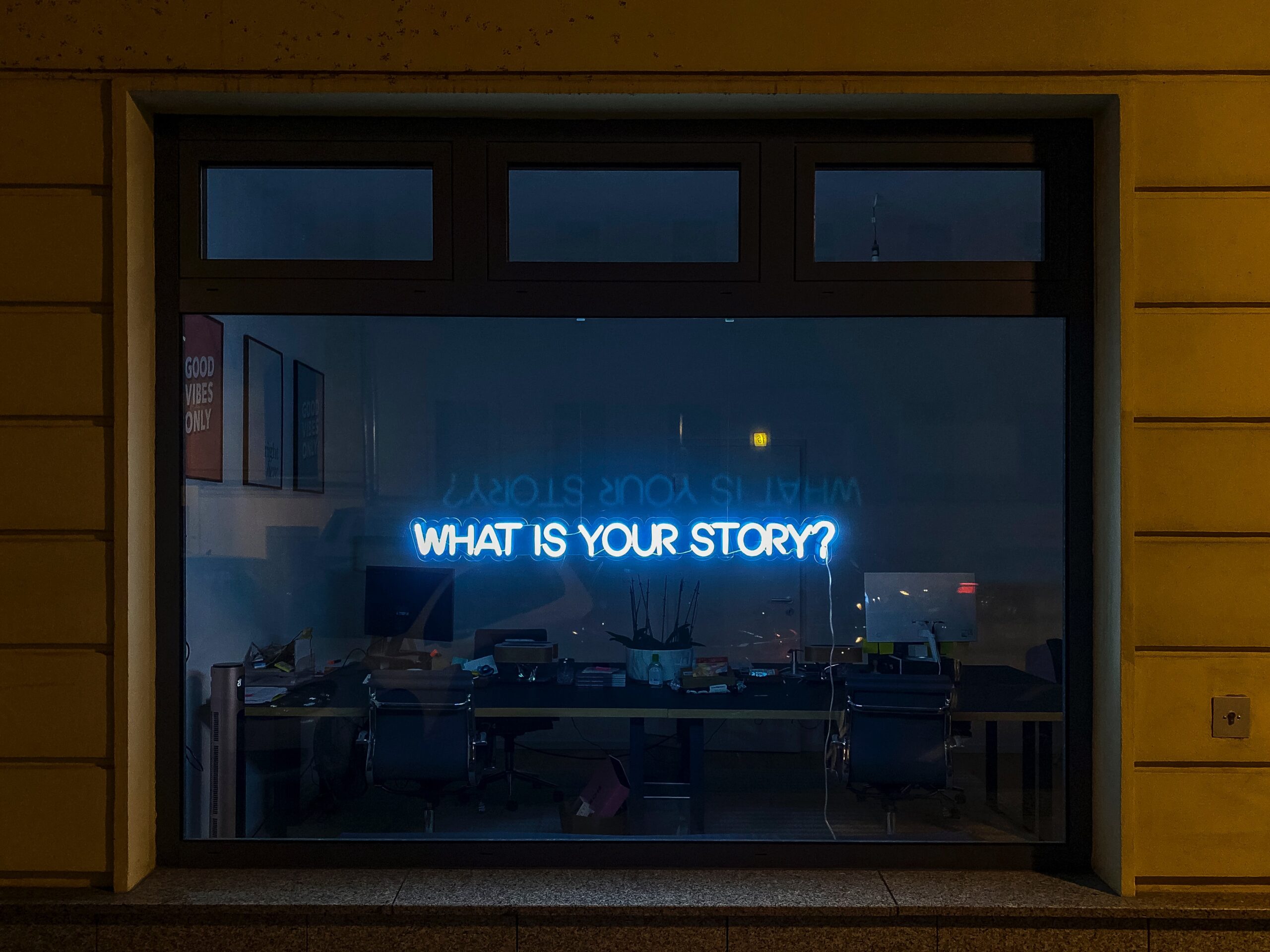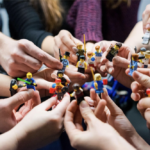BreakTheBias: The Road to Resilience
Sharm and Malar planned insightful leadership discussions around the theme ‘Break The Bias’. This theme was inspired by the 2022 campaign for International Women’s Day, which was celebrated throughout the month of March. Their first virtual panel of March, BreakTheBias: The Road to Resilience, set the stage for the next four weeks of conversations with corporate leaders about developing leadership skills to achieve an unbiased workplace of employees at their optimal performance.
Sharm started the conversation with the statement, “we can all agree we are all biased.” The phrase ‘breaking the bias’ assumes that biases are a negative thing to have and we should aim to eliminate them. However, Malar wasn’t completely sure about this understanding of biases as she is conscious of some of her biases but isn’t ready to give them up herself. Malar believed that understanding the context of these biases we have is important for our learning and development. Sharm and Malar then dived into the question of why breaking the bias is a topic of concern.
While the starting point of Break The Bias begins with International Women’s Day, Malar and Sharm believe that biases go beyond women’s issues. As we think of it as a broader theme beyond gender, breaking biases can actually contribute to a more equal world, a versatile way of leadership and a psychologically safe workplace, which is what the rest of the March virtual panels will cover. Breaking biases is needed because discrimination negatively impacts certain groups of people. Sharm said that talking about your biases is essential because acknowledging them can help us in our professional development to make better decisions. Biases cloud our judgments, which stops us from achieving diversity and inclusivity. Being aware of our biases will make us realise how our decisions impact others’ lives, creating a more equal environment for all.
Malar discussed the invisible enemy we assume when it comes to biases against women. We tend to immediately associate men as the enemies of feminism and gender equality but Malar personally does not see it the same way. Malar shared her experience growing up in a male chauvinistic environment. She never saw men as her enemies because it was the men that helped her in her career. However, Malar does note that the reason she can only list men as those that made an impact in her career is because there weren’t many women in those leadership positions to influence her.
Malar also brought up her first job interview experience. Her interviewer had told her that she lived in a man’s world, which made her realise the reality of being a female in a world with gender biases. Malar became conscious that because she was female and a mother, she had believed that there were certain things that she could not do. Sharm also shared a similar experience she had gone through when she became conscious of the biases in our society. As a female and a racial minority growing up in Malaysia, Sharm’s father had told her if she did not study hard and was not fluent in English, she would have a tough life compared to the racial majority. That became implanted in Sharm’s mind throughout her childhood and she actively worked towards that ideal.
We can see from both Malar and Sharm’s stories that sometimes internal biases are more dangerous and harder to break than external ones. The experiences that Sharm and Malar had to go through made them work a lot harder than others who are not subjected to these biases. These similar situations also occur to women in the corporate world. There’s the assumption that once women get pregnant, they are no longer dedicated or motivated to work at their optimal performance, which creates prejudices against women in the workplace. Sharm brought up an example of the education system in Singapore. She mentioned that the government has a lot of say on who goes into particular educational faculties and fields. For example, the faculty of medicine does not take in as many women compared to men because of the assumption that when women have kids, they will give up their profession as a doctor.
Sharm brought up the issue of making men the enemy when women are disenfranchised and she believes the world does not work in such black and white terms. Malar also expanded on the reasoning and benefits of equalising the playing field and removing biases. Breaking the gender bias not only reduces prejudices against women, it also influences the system’s prejudices against men. When women get more opportunities, it helps to take the extra responsibilities off men’s shoulders. Some men want to spend more time at home with their families and removing biases against women will benefit them. Between a husband and wife, the man is more harshly criticised if he were to lose his job as he’s seen as the breadwinner. If both men and women were given the same opportunities, men wouldn’t have to go through the pressures and expectations of society. Working on biases against women will lead to an equal world for all.
Malar and Sharm both recognised that the gender bias is improving with organisations putting certain gender equality practices in place. Malar mentioned that before the pandemic, International Women’s Day was focused on getting 30% of women as board members, which she agreed was a necessary bias. There was a lack of female leaders not because they didn’t have the abilities, but because women had higher expectations of themselves and didn’t fully believe that they were capable of taking on certain positions. For example, a study examined the way both men and women applied for jobs. If a man ticks off 6 out of the 10 skills needed for a job, he applies for it confidently while a woman with the same number of ticks will doubt her abilities. Moreover, if a child does not do well in school, the mother is more likely to blame herself for focusing on her professional development rather than her child but a father wouldn’t.
When society has programmed women to put that kind of pressure on themselves, having a 30% target of female board members may not be helpful if the organisation doesn’t recognise the context of the unequal system that women have been subjected to and provide the necessary support to influence more women. Also, if we want to reach the goal of 30% female board members, we need to make sure that the right women are chosen to fill these numbers. When capable women take on these roles and succeed in them, it motivates more women to push themselves into leadership roles. However, if the wrong women are chosen and they fail, it can backfire and hinder the capable women from taking on these roles as they will compare themselves and doubt their abilities. Malar and Sharm agree that it’s best to focus on quality than quantity when trying to break biases.
Biases are sometimes centred around emotions. We all have a logical and emotional side and when we’re overcome by emotions such as anxiety and fear, this can affect our judgments, which leads us to make biassed decisions. Making unbiased decisions will require us to return to a state of calmness. With this in mind, it’s normal that biases make us feel safe in certain situations and it encourages us to make choices that become our preferences based on our past programming. However, these preferences also create biases that should be broken. Therefore, acknowledging your preferences makes it easier to create an unbiased world.
Not only does breaking the bias lead to an equal society, it also helps us as individuals create a resilient mindset. As mentioned, biases can stem from anxiety and fears due to unfamiliar situations. When put in such situations, we have to build a resilient mindset to survive and overcome the adversities causing these anxieties. By making decisions based on biases we’re comfortable with, we don’t allow ourselves to think from a different point of view, which could possibly help us break out of these fears and improve our well-being. If we continue in the same cycle of biases, we are bound to feel helpless when facing such situations. Building a resilient mindset requires you to overcome your biases and be willing to view things from an unbiased point of view.
However, it’s also important to note that being biassed isn’t always a negative connotation that represents you’re against someone or something. Malar and Sharm explained that you can also be biassed for something. They brought up the example of last month’s guest, Adi Pratiko, who said he was biassed for self-care and well-being. As Adi is aware of his biases, he then chose to work with partners that were not biased for the same preferences he had, which focuses on improving his employees and creating high-performing teams. Biases can also be positive when it improves the lives of others.
If you aren’t sure if your biases are positive or negative, ask yourself if your biases are giving you hope and possibilities or making you feel helpless and stuck. Self-awareness is the first step to breaking the bias and once you realise your internal biases and acknowledge them, you can then begin taking the actions to actively work against those biases such as improving listening skills and even asking for honest feedback. With that introduction to the theme Break the Bias, Sharm and Malar ended their discussion as they anticipate exciting guests and insightful conversations.
Tune in to those conversations:
What Makes a Man Champion a Women’s Movement – https://youtu.be/Cj7utSmKjCs
The One with the #BreaktheBias DNA – https://youtu.be/hXushs3aeu8
Finding Balance – https://youtu.be/6HRl3TctwgY
Grounded or Stuck? – https://youtu.be/KKexxNJ9XWA



